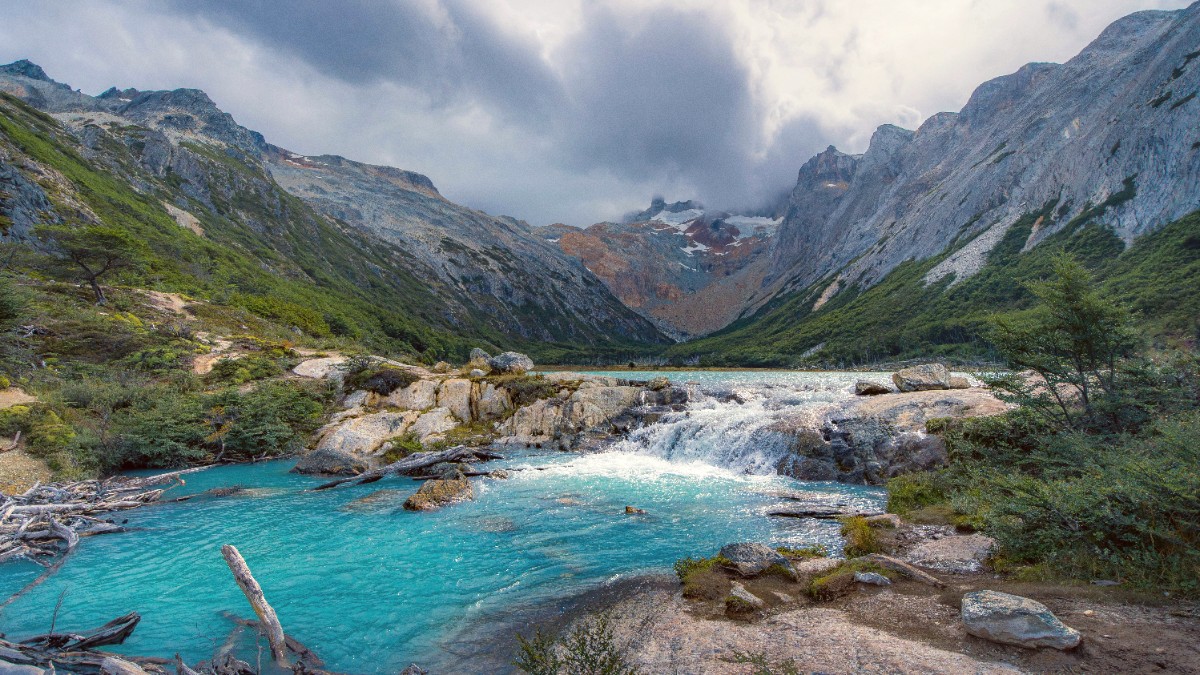
Tierra Del Fuego, Argentina
People know Ushuaia as the southernmost city in the world. It lies at approximately 54°48′S latitude. This location places Ushuaia in a subpolar forest setting, different from many other Patagonian landscapes.
The Yamana people, skilled seafarers and hunter-gatherers, were the early inhabitants of the region. They adapted to the climate, navigating the Beagle Channel in canoes made from tree bark.
European contact began in the 19th century. British missionary Allen Gardiner founded Ushuaia in the 1870s. Argentina officially established the city in 1884. A penal colony was established there; prisoners constructed much of the city’s early infrastructure, including roads, buildings, and the famous "End of the World Train." The prison operated until 1947.
After the prison closed, Ushuaia became a strategic naval port for Argentina due to its geographical position. The city also became a center for scientific research, notably related to Antarctica.
In recent decades, tourism became the dominant industry. Ushuaia is a major international tourist destination, especially for Antarctic cruises. Its remote charm, rich history, and natural surroundings draw visitors from across the globe.
Yamana people's culture and adaptation to the environment.
British missionary establishment and Argentine founding.
Prison labor building city infrastructure.
City's role as a strategic port and research base.
Growth as an international tourist and cruise hub.
Ushuaia’s identity remains tied to its past as a frontier outpost at the world’s edge, a blend of resilience, exploration, and unique natural beauty. The city’s remoteness combines with its accessibility to form a starting point for exploring the planet's southern extremes.
Explore Tierra del Fuego National Park, hike through ancient forests, and discover glacial lakes. The Martial Mountains offer hiking in summer and skiing in winter.
The city's past as a penal colony comes alive at the former prison, now a museum. The culinary scene features Patagonian specialties like slow-roasted lamb and fresh king crab.
Whether you seek outdoor adventure, historical insight, or a path to the white continent, Ushuaia delivers a deep, satisfying experience.
Ushuaia offers a memorable experience. From the port, boat tours navigate the iconic Beagle Channel, where you will see islands populated by sea lions, cormorants, and, seasonally, penguins.
The city is the main departure point for expeditions to Antarctica, giving it a global appeal. You experience a sense of being at the very edge of the inhabited world.
Explore dramatic landscapes, ancient forests, and glacial lakes within the park.
Boat tours show islands with sea lions, cormorants, and seasonal penguin colonies.
Ushuaia serves as the main departure point for voyages to the white continent.
The Martial Mountains provide chances for hiking in summer and skiing in winter. The city's remote location combine with its accessibility.
Mildest weather, long daylight. High season, most crowded. Ideal for hiking, Beagle Channel, Antarctic cruises.
Fewer crowds, lower prices. Suitable for many activities. Unpredictable weather, some closures.
Lowest prices, excellent for winter sports. Coldest temperatures, short daylight. Limited summer activities.
During high season, book flights, accommodation, and popular tours well ahead of time.
Always pack layers for unpredictable Patagonian weather, even in summer.
Be ready for potential changes in plans due to weather conditions.